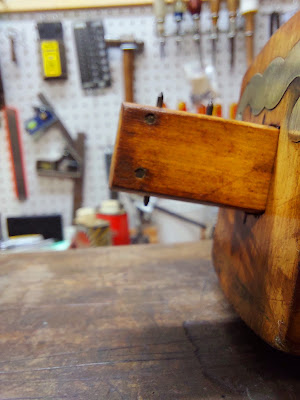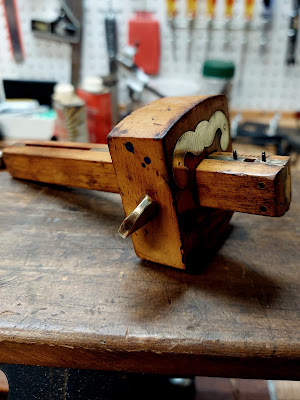Tool Restoration
A Hundred Years Old
Welcome, or welcome back, whichever may be the case! In this edition I just want to tell you about my quick cleanup of a marking gauge I found in one of the toolboxes that were given to me a few weeks ago. I wouldn't call it a restoration because I'm really just cleaning it up, but let's not quibble!
The Combination
Here's something I learned with this little project - the Stanley #76 gauge is a combination marking and mortise gauge! Apparently, a mortise gauge has 2 pins that marks both sides of a mortise. At the same time, it's a standard marking gauge because the side opposite the 2 pins has a single pin as is found in the basic marking gauge! The things ya learn.Aging the Gauge
Sometimes the internet is amazing - it only took me a few minutes to be able to put a manufacture date range to this gauge. Turns out, the no.76 can't be any younger than the 1920's and possibly as old as 1905! As with other vintage tool projects I like to go with the latest date because I don't want to assume it's older than it is - I don't like people thinking I'm older than I am! What's fair is fair.
US Patent: 132,421
Improvement in Carpenters' Gauges: Split-shaft Mortise Gage
Patentee: Justus A. Traut - New Britain, CT
Manufacturer: The Stanley Rule & Level Co. - New Britain, CT
Patent Granted: Oct. 22, 1872
This patent marks the first appearance of prolific Stanley inventor Justus Traut in the world of marking gages. This particular patent covers the brass "gib" used to protect the arm from the retaining screw, as well as the new method of constructing mortise gages with a split shaft and captive slider. Both of these patented ideas were used on Stanley tools for over 80 years, and the brass shoe is still in use on many gages to this day. - Directory of American Tool and Machinery Patents
The Condition
A quick assessment of the gauge showed that it was in excellent condition. All the parts were there, and functioned perfectly. There were no cracks or broken parts, and quite frankly - it was just dirty!Here's a little closer look:
I think some of it was just dirt and grime from a career's worth of use, and some just from sitting in a toolbox for about 70 years.
The Cleanup
Making this cleanup so simple was that there were so few parts. Disassembly took seconds...
Then a few spritzes of water and a soft rag later, I was moving onto the Brasso for...you guessed it...the brass. I always love an opportunity to use Brasso, it takes me back to Sunday evenings in my Army days - halcyon days they were!
And can I just say - I love the font they used back in the day, somehow leant a little class to something as simple as a marking gauge.
Wrapping It Up
And just like that, it was done. Reassembly and a little paste wax and - done!
I'm glad I didn't try to sand it down and do a total restoration on this gauge. I think the patina and evidence of use gives this piece lots of character.
Love the color of the boxwood and what's left of the old varnish. It looks good from any angle...
One last beauty shot!
Thanks for stopping by - see ya soon...
















